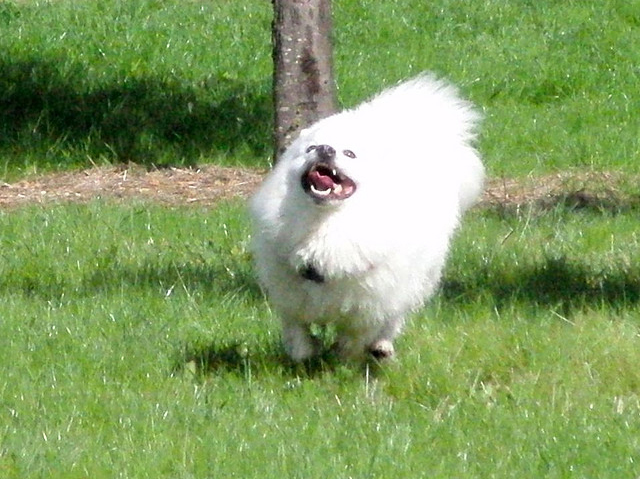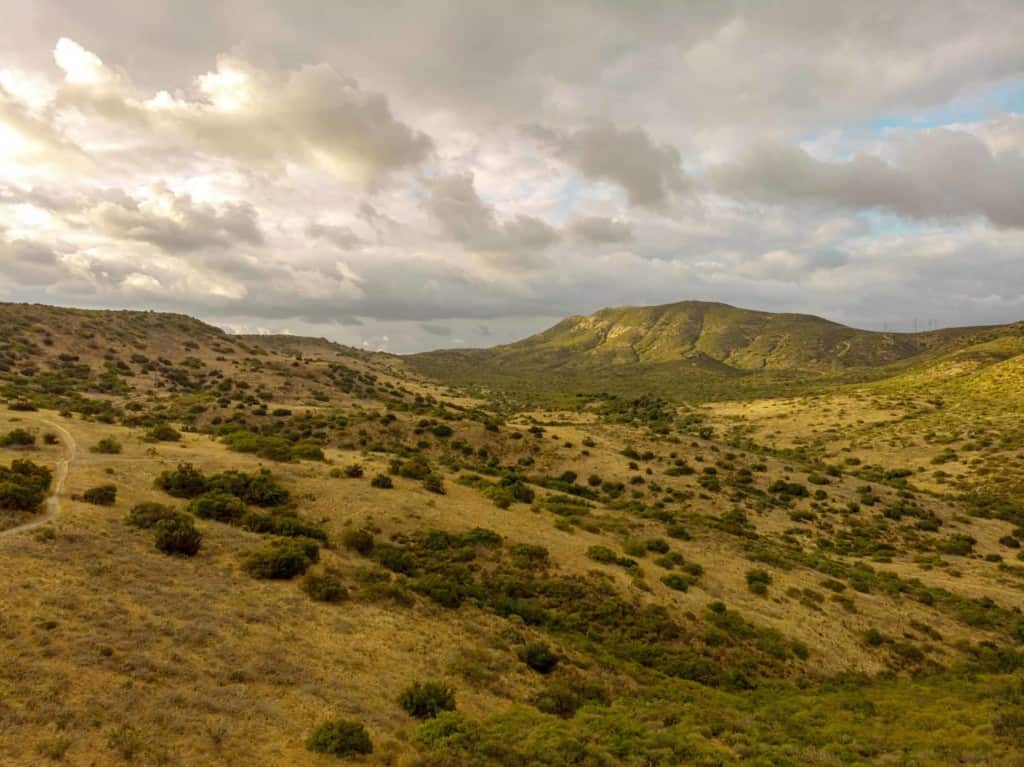
Dog on Fairmont Ridge. Photo: Mary (CC)
We all like to give our dogs the privilege of romping off-leash from time to time, and not just in a fenced dog park. But with that privilege comes responsibility. The East Bay Regional Park District is among the precious few land-management agencies that allow visiting dogs to hike without a leash away from developed areas. Unfortunately, not everyone who visits EBRPD preserves is aware of the impact their friendly companions can have on other visitors. DogTrekker chatted recently with a top park official to learn about the most frequent problems encountered due to the EBRPD’s very liberal dog policies.
We all like to give our dogs the privilege of romping off-leash from time to time, and not just in a fenced dog park. But with that privilege comes responsibility. The East Bay Regional Park District is among the precious few land-management agencies that allow visiting dogs to hike without a leash away from developed areas. Unfortunately, not everyone who visits EBRPD preserves is aware of the impact their friendly companions can have on other visitors. DogTrekker chatted recently with a top park official to learn about the most frequent problems encountered due to the EBRPD’s very liberal dog policies.
The No. 1 issue: While dogs in undeveloped areas of many EBRPD parks are allowed to romp leash-less if under voice control, not all dogs or their people seem to know what voice control is. (Quick definition: a dog under voice control is one that comes and stays with its guardian immediately upon command.) Park officials told DogTrekker they struggle with issues caused by out-of-control dogs running up to hikers and picnickers, chasing cattle and deer, spooking horses and getting into fights with other dogs. Loose pets, they emphasize, can cause considerable anxiety and even instill fear in people who have had bad experiences—or no experience—with animals. Cultural differences play a role, too. In many cultures dogs are used only for hunting and guarding and are not kept as pets. So, your comment of “don’t worry, he’s nice,” doesn’t help when Bruno rushes up to other trail users who are uncomfortable around even the friendliest dogs.
The best solution to avoid losing off-leash access in the future: Put your dog on a leash before getting him out of the car and keep him leashed until you are far away from parking and picnic areas. Until or unless he has a rock-solid recall, he shouldn’t be off-leash at all. It’s natural for a dog to run up to other dogs, people, cattle, deer, birds and other animals. But it’s the owner’s responsibility to train a dog to a level at which a command to “come” overrides the instinct to investigate while off leash.
The No. 2 problem experienced in East Bay parks: People not picking up after their pets—or, almost as bad, leaving poop bags by the side of the trail. To be sure, no one wants to carry a stinky bag of poop around all day. But “pack it out” is part of the bargain when you take your dog to public places. The easiest solution: bring a gallon zip-lock, put the poop bag inside and stash it in your backpack until you encounter a trash can.
In short, more education, more consideration and more respect for the rules needs to be shown by dog guardians so that issues can be resolved without limiting access to our parks and open spaces.






